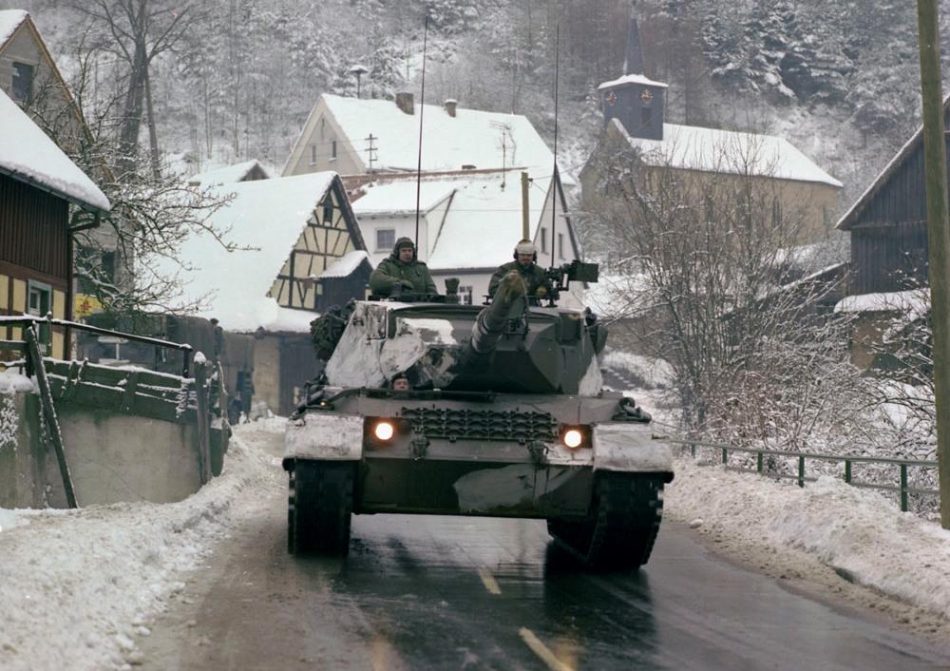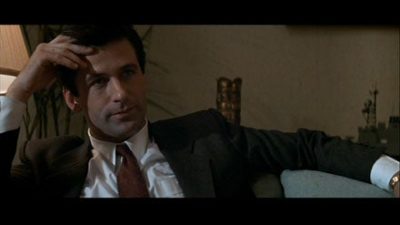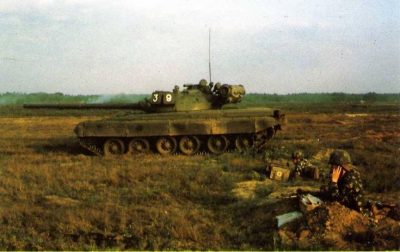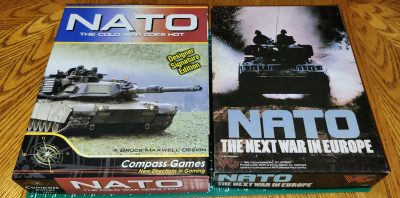Gaming the War that never was
By David Garvin
A few days ago, I received a game in the mail. It was a copy of , a magazine game from Strategy and Tactics magazine. This was published in 1983 and was set in the late 1980s. As I was setting the game up, I noted some obsolete terms, such as “USSR” and “Leningrad”.
I simply smiled and then out of curiosity I went to my games cupboard to have a look at my collection. The majority of my games are based on the Second World War; however, a sizable number of my games simulate combat between two factions, one of which no longer exists! Although some of my games date from the Cold War itself, such as those in the series, I have some that were made well after the Berlin Wall fell in 1989! This got me thinking: what is the appeal of simulating combat from a war that never happened? In this article, I will look at the history of these games and then wax philosophical as to why they keep such great appeal.

Considering games that speculated a Cold-War-Turned-Hot, there are two basic types. The first is the type that was developed during the Cold War itself. One of the first such games I could find in my research was . This was released in 1972 and it seems to be one of the earliest examples of a board wargame projecting a fight in the near future.
The designer, Jim Dunnigan, is no stranger to many board wargamers. He was the designer of Panzerblitz, arguably one of the most important tactical games ever developed. Though most of his over 100 games were simulations of battles fought, he did design games based on other hypothetical battles, such as 1980’s . Other games of this group include NATO: Operational Combat in Europe in the 1970s, , Harpoon, and .
The latter title ended up with three more games in the series; players could link them into one massive game or could play each individually. The follow on games were: Arctic Front: Battle for Norway, , and Southern Front: Race for the Turkish Straits. Suffice it to say, there were a number of games that were continually being developed from the early 1970s until the very end of the Cold War in 1989.
Soviets ready to invade Norway. Circa late 1980s.From Nordkapp, 1983.
As a teen and early 20-something during the 1980s, I played many of these hypothetical wargames. Looking back, I think I was somewhat of a sociopath for rushing through the nuclear barrier to blast my way into West Germany (sic). Though war could have launched at almost any time during the 1980s, and at some points, almost did, it never really dawned on me that even with such prophetic titles as , that the events played out on my mother’s dining room table would ever come to be.
As for the games themselves, they ranged from the Operational, moving divisions and brigades around to the tactical, where line of sight and individual platoons are maneuvered about. Also, not just a hypothetical ground war in Europe was possible to be gamed. The aforementioned Harpoon is still popular today and allowed the gamer to easily simulate naval combat. It was such a hit that it was used to help craft The Hunt for Red October, the 1984 novel by Tom Clancy. It of course spawned the of the same title.

Just after I joined the Regular Army in 1989 (“Active Duty” in US parlance), the . With that would be the end of an era: no more “Cold War Gone Hot” games. I still had my collection and there was no way I was going to let it go to waste! That said, I still had my games that simulated various wars that actually happened, so there was that. But it was the change in the era that led to the second of two classifications, those made after the Cold War.
Admittedly there was a lull in such games in the early 1990s; designers were working on some games that reflected recent conflicts, such as the Gulf War, the war in the Falklands, and others. But that gap ended in the late 2010s. Perhaps it was a sense of nostalgia, but there have been a number of games released to great fanfare since then. Notables are the number of upgrades of existing games. But one of the greatest sought-after is 1985: Under an Iron Sky.
Yes, this is my copy of Under an Iron SkyThis monster game takes advantage of hindsight; that is, its Order of Battle is set as it exactly was in July 1985. As an example, the Canadian Air Group in Europe was at that time phasing out its CF 104 Starfighters for its new . This game reflects that only two-thirds of the jets had been replaced and the NATO player gets to use CF 104s in the strike/reconnaissance role.
The game also gets to fix some of the misconceptions about the Soviet Order of Battle from that time. Earlier games could only rely upon open-source reporting to speculate the orders of battle and indeed the capabilities of Soviet and Warsaw Pact equipment. Now thirty years after the fall of the Soviet Union, gamers have insight into the forces that faced off against one another for decades.

Other games have been released, of course. has a number of games set in the hypothetical Cold War Gone Hot, with more in development. Multiman Publishing has joined in this latter-day phenomenon with its release of . This game is unique in that the player can simulate three “what-ifs”. First, examines a third world war hot on the heels of the surrender of Germany in 1945.
Next is a look at 1983, assuming the previously mentioned Able Archer exercise had not been stopped. Finally, an alternate look at 1989 with the Soviets trying to resolve its crisis through war. A unique aspect of this renaissance of Cold War Gone Hot games sees many games being remade.
One series that is in production is the Third World War series that was originally released by the Game Designers’ Workshop. The Third World War is due to be released in 2022. It is joined by another reboot, . This is a remake of the previously mentioned NATO: The Next War in Europe. The designer, Bruce Maxwell, decided to remake his wildly successful game of 1983. In his notes for the new game, he notes that he made NATO in a noticeably brief time and did so in order to fulfill an obligation. He didn’t expect much of it, but then it went on to sell over seventy-five thousand copies.
The most interesting feature of the new game is that its map uses the exact same grid numbering system as the original. So, hex 5223 in both games is set in Southern Germany on the border with France! That said, both games were designed to be easy to learn and easy to play. The Original game certainly met that description, but the jury is out on the latter.

So back to the original question: what is the appeal? Gamers certainly like to recreate historical battles, so why do this? It made sense in the Cold War to see what could happen tomorrow, such as it was. But now we have to go back in time over 30 years to set ourselves up, so what gives? And it’s not just the board wargamers; has proven to be quite a popular game since it was released about five years ago!
Well, if I am any sort of indicator, the same thing that draws us to re-fight the battles of Waterloo, Austerlitz and Stalingrad draw us to fight the unfought battles of the Fulda Gap. After all, we like to put ourselves into a story, as it were, on one side or the other. Typically, we try to do better than our historical counterparts. In Cold War Gone Hot games, there is no real battle to use as a standard against which to judge victory.
Instead, these tend to look back and wonder “What if?” and using the game, try to re-write history. As a closing note, the Next War series of games by GMT Games is a throw-back of sorts to the Cold War Gone Hot games of the previous decades. I guess it just goes to show that war sells, even if that war has yet to come.
David Garvin is an avid board wargamer who has on no less than ten occasions started a nuclear war in Germany. Thankfully, all simulated!

team yankee was RE RELEASED 5 yrs ago..
not released…
it’s really disappointing that your article missed original team yankee from the era, and ‘air cav’ for that matter…
mediocre article.. not well researched other than from personal experience it seems…
article will seem enlightened to whippersnappers..
but to us old grognards… it is not.
I didn’t mention every game because there are that many. I had the original Team Yankee by GDW and I found it lacking.
Now I must remind you that “Team Yankee” (the miniatures game) is nothing at all like “Team Yankee” (the board game).
I am sorry that the article didn’t reach your standards; however, this was not a research article but rather an opinion on how board wargaming treated and still treats a certain era that never really came.
Harvey, It is not focused on anyone but our readers, as for the new crop of gamers vs the old ones, to be frank some of the old ones cannot disappear fast enough, they have become a drain on the hobby who pushback on growing the community and even more they have in some cases stifled innovation in game design and mechanics. You mention the original TY game, it was fair at best and many of the WW3 games from the 1980’s were just… bad. They were not well researched, perhaps due to the actual classification the subject matter, but more so they sometimes cut corners to make a marketable game.
I also invite you to reach me via the site and are welcomed to write a rebuttal article.
As someone who works with the young crop of real wargamers, they have the talent and drive that even I lack. What I find great about them is that they just ignore negative reception they have gotten from the old guard and are creating some great games.
Well Harvey, as a fellow grognard myself, I believe it is actually more fair to say it was your post that wasn’t well researched, not David’s initial article. The article said “And it’s not just the board wargamers, …” which indicates that what follows is referring to something other than a board game. Plus, if you had just clicked the link you would have found it was clearly referring to the Team Yankee miniatures game which was released in 2015 or so.
What a great piece. First of all it brought back great memories of several of the games you mention (I have an original copy of TWW that I keep meaning to break out) plus I’m now tempted by the reissue of that same game. Plus several others that you mentioned… Oh the poor wallet!
And, I thought it was excellently researched, and well written from a very personal aspect!
It really sums up the multiple aspects of gaming this period – something that is much closer to us, generationally, than many wargaming areas, and I’m sure some of us lived through (at least the end period).
Hi Jonathan.
Thank you for your kind words. Since you have the original of TWW, do you have the Arctic Front module from it? It is my favorite to play of the whole series.
Very nice article David. Of all the eras, I have to say the hypothetical (thank God!) World War III era is my favorite with WW II being a close second. Maybe it was, in part, because by the “WW IIII era” technology had advanced enough to allow several more options that never existed in the past such as tactical airborne insertions by helicopter, effective anti-armor capabilities for infantry units, etc.
I always wanted to put together a couple of teams to take GDW’s Third World War (have the game and all modules) to handle the strategic aspects of the conflict and use miniatures or GDW’s Assault series (have the complete game series here as well) to handle the tactical aspects of the game (i.e. combat resolution). Unfortunately that’s a tall order and, as we age out, I’m losing many of my old game mates so it will likely always remain a dream.
Have a good one. Maybe some day I’ll get to face you over the Assault board again. I believe you took me to task the last time we played!
David, nice article. I bought the Nordkapp magazine & game, as did one or two of my Canadian army reserve pals, back in late 1983 because we were going to Norway for EX AVALANCHE EXPRESS in 1984. We wanted to have a better clue as to what the big picture was – and to play a wargame of course !
I dragged it out a while back but couldn’t get anyone interested in playing it. Pity, it was a challenging and fun game with lots going on.
Cheers for now and keep up the good work !
Hi Hugh
Thank you for your comments. I received a copy of Nordkapp recently (as stated in the article). I have it on my table right now for solo play.
I just checked: there is no VASSAL module for it. Pity. It really is a fun game.
Cheers!
You did miss out my favourite Cold War Gone Hot board game and that was Tac Air by Avalon Hill. Not a criticism, just wanted to mention it because it’s an ace game and i want people to know about it!
Hi Tim
I’ve not played that one, though of course I had heard of it. And I’ve heard many good things about it!